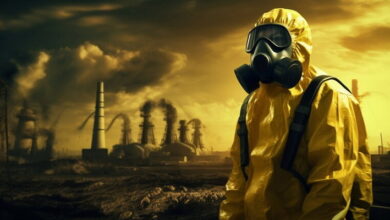Atmospheric Chemistry MCQs with Answers

Welcome to the Atmospheric Chemistry MCQs with Answers, it helps learners quickly identify areas for improvement in Atmospheric Chemistry Online Test.
| Atmospheric chemistry is the study of chemical processes occurring in Earth’s atmosphere, focusing on the composition, reactions, and dynamics of gases and particles that influence air quality, climate, and environmental health. It plays a crucial role in understanding and addressing global challenges such as air pollution, ozone depletion, and climate change.
In an atmospheric chemistry quiz, MCQs on atmospheric chemistry typically cover topics such as the composition of the atmosphere, sources and sinks of pollutants, chemical reactions involving atmospheric species, and their impact on human health and ecosystems. Air pollution multiple choice questions explore the sources, effects, and control measures of pollutants like particulate matter, nitrogen oxides, and volatile organic compounds. Ozone depletion MCQs delve into the chemistry of ozone-depleting substances (ODS) and their role in stratospheric ozone layer depletion, emphasizing international efforts to phase out ODS through protocols like the Montreal Protocol. Greenhouse gases exam questions assess understanding of the role of greenhouse gases such as carbon dioxide, methane, and water vapor in the Earth’s energy balance and climate system. Atmospheric reactions MCQs focus on chemical processes in the atmosphere, including photochemical reactions and aerosol formation, influencing atmospheric composition and climate dynamics. |
Atmospheric Chemistry Online Quiz
By presenting 3 options to choose from, Atmospheric Chemistry Quiz which cover a wide range of topics and levels of difficulty, making them adaptable to various learning objectives and preferences. You will have to read all the given answers of Atmospheric Chemistry Questions and Answers and click over the correct answer.
- Test Name: Atmospheric Chemistry MCQ Quiz Practice
- Type: Quiz Test
- Total Questions: 40
- Total Marks: 40
- Time: 40 minutes
Note: Answer of the questions will change randomly each time you start the test. Practice each quiz test at least 3 times if you want to secure High Marks. Once you are finished, click the View Results button. If any answer looks wrong to you in Quiz, simply click on question and comment below that question, so that we can update the answer in the quiz section.
Download Certificate of Atmospheric Chemistry Test
On the end of Quiz, you can download the certificate of the quiz if you got more than 70% marks.
Atmospheric Chemistry Flashcards
What is the process by which atmospheric nitrogen is converted into ammonia called?
Nitrogen fixation
What is the primary source of anthropogenic volatile organic compound (VOC) emissions?
Vehicle exhaust
Which layer of the atmosphere contains the ozone layer that protects Earth from ultraviolet radiation?
Stratosphere
What is the process by which atmospheric nitrogen oxides are converted into nitric acid and other nitrates?
Nitrogen oxides (NOx)
Which pollutant is primarily responsible for the formation of ground-level ozone?
Nitrogen oxides (NOx)
What is the main natural source of volatile organic compounds (VOCs) in the atmosphere?
Vegetation emissions
What is the process by which atmospheric carbon dioxide is absorbed by oceans and terrestrial ecosystems?
Carbon sequestration
What is the main natural source of volatile organic compounds (VOCs) in the atmosphere?
Vegetation emissions
Which of the following pollutants is primarily responsible for the formation of acid aerosols in the atmosphere?
Sulfur dioxide (SO2)
If you are interested to enhance your knowledge regarding Physics, Computer, and Biology please click on the link of each category, you will be redirected to dedicated website for each category.




